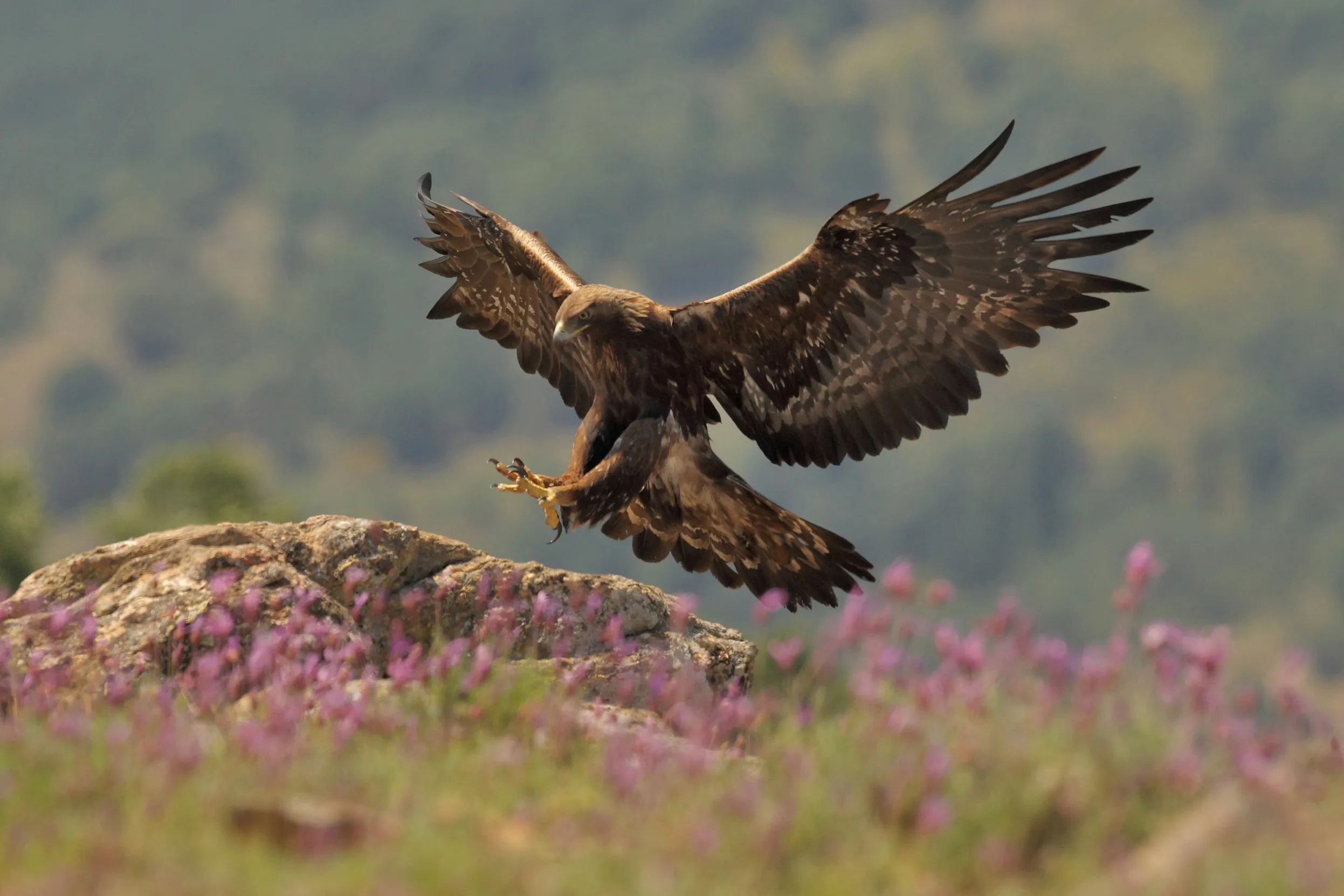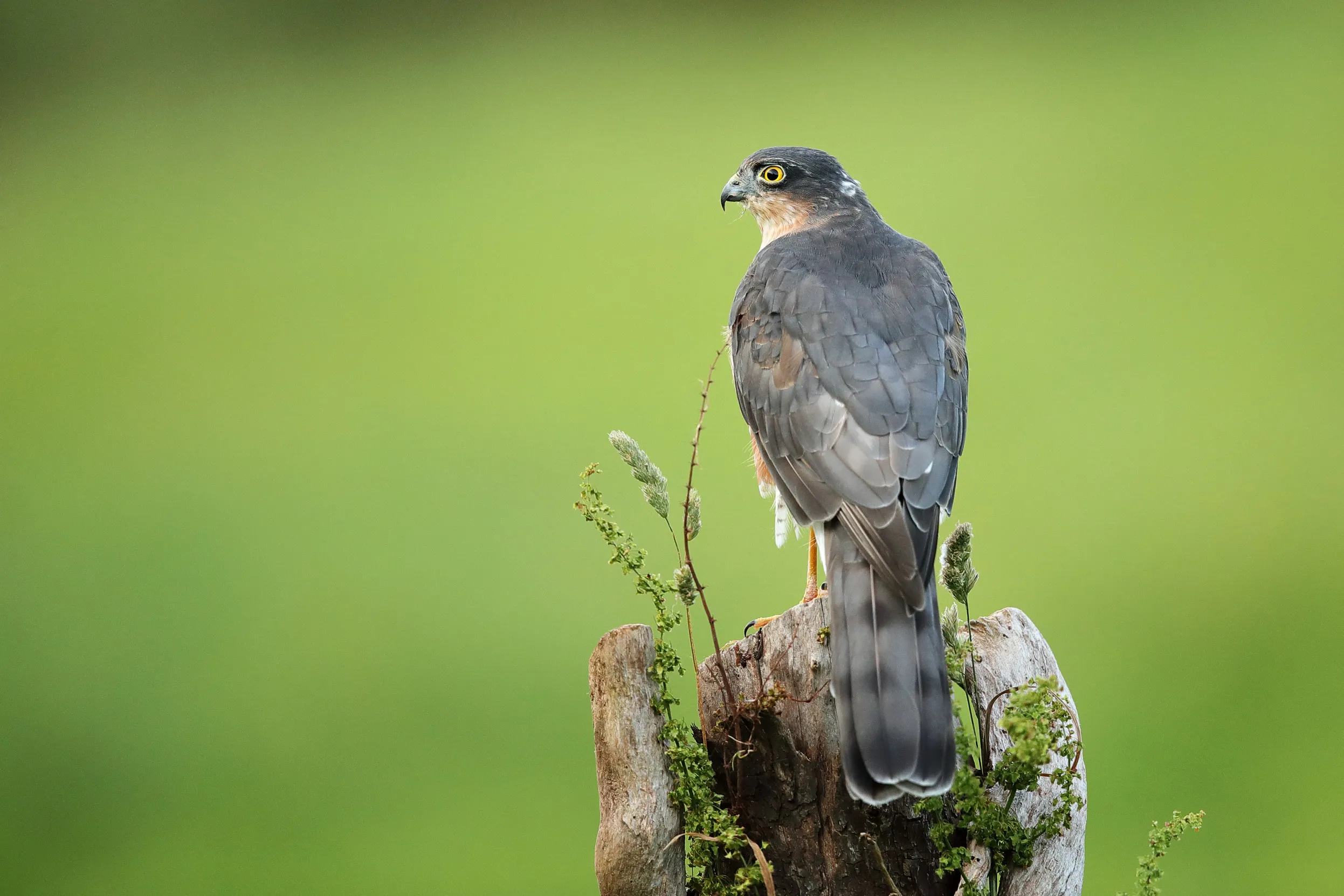Species reintroduction and conservation
Discover where the RSPB stands on species reintroductions and conservation, invasive non-native species and birds of prey.

On this page
Discover where the RSPB stands on invasive non-native species, birds of prey, and species reintroductions.
Find out more about the work we’re doing on these issues.
Invasive non-native species
Invasive non-native species are species that have been introduced to areas outside their natural range by human activity and are posing a threat to native wildlife. There are more than 3,000 non-native species in Britain. Many are harmless, but occasionally a species will establish and thrive in a way which risks native biodiversity.
The introduction of invasive non-native species is one of the biggest threats to global biodiversity. Preventing invasive non-native species from being introduced or, failing that – acting quickly to prevent them becoming established, are key to tackling this issue.

Red Squirrels
Red Squirrels were once found across most of the UK but have been pushed out of many areas by non-native Grey Squirrels. Now Reds are only widespread in Scotland – especially the Highlands – and Northern Ireland. In England and Wales, small numbers of Red Squirrels are found in only a handful of locations.
We've been working to protect Red Squirrels for many years. Here’s how:
-
We are a member of the Scottish Squirrel Group and partnered with other organisations to create the Scottish Strategy for Red Squirrel Conservation. The Strategy will be reviewed and updated in 2025 in line with the Scottish Biodiversity Strategy.
-
We are a signatory for the UK Squirrel Accord and sit on the Red Squirrel Conservation sub-committee.
-
We are partners with the Saving Scotland's Red Squirrels project which is working at a landscape scale to protect Red Squirrel through monitoring and targeted control of Grey Squirrel in key Red Squirrel habitat in Scotland.
Managing Grey Squirrels
Grey Squirrels outcompete Red Squirrels and will replace them in an area over time. Reds have already been lost across large parts of England and Wales. The RSPB recognises that targeted control of Grey Squirrels at a landscape scale is the best strategy for protecting Red Squirrels in areas where the two species are found together.
On RSPB reserves, which are managed for Red Squirrels, some limited control of Greys may be carried out in order to protect Reds. This is done in an effective, humane and legally-compliant way.
Policy and legislation on non-native species
The RSPB has been closely involved with creating policy and legislation on non-native species issues, both nationally and internationally.
Where native wildlife is threatened, and where a practical response is possible, we promote effective and humane measures to protect native species and habitats from damage or extinction. We will continue to help develop and implement the government’s Invasive Non-native Species Framework Strategy for Great Britain.
Why should we protect birds of prey?
As skillful predators and scavengers, birds of prey have a vital role in the natural world. But they are now missing from many former strongholds, both in the UK and Europe. Of the UK’s 15 breeding bird of prey species, nine are on the Red or Amber list. Habitat loss and deterioration, illegal killing, pesticides and poisons in the environment are all impacting bird of prey populations. We have national and international responsibilities to safeguard and restore their numbers. Our lives and landscapes are much poorer without them.
Legal protection, support from landowners and conservationists, and reintroduction projects have helped UK bird of prey populations recover significantly in the past 100 years. But more work is needed.

Birds of prey and songbirds
Some blame the decline of songbirds on the increase in numbers of birds of prey, particularly Sparrowhawks. While it can be upsetting to see garden birds being killed by Sparrowhawks, the RSPB does not support calls for legalised control of birds of prey to protect songbirds.
Extensive research, by the RSPB and many others, into declining farmland songbirds has provided no evidence that predation by Sparrowhawks has driven population declines. Instead, a lack of different food resources and suitable breeding habitat is thought to be the main cause of songbird declines – mainly because of modern farming methods.
Species reintroduction
Bringing Beavers back to the UK
Beavers are native to the UK and used to be widespread, but were hunted to extinction in the 16th century. There are now Beavers in Scotland, England and Wales once again, though populations are small. Beavers are protected in Scotland and England, making it illegal to deliberately capture, injure, kill or otherwise disturb them. In Wales, the Welsh Beaver Project is consulting on plans for a trial of free-living Beavers. The RSPB is represented on the stakeholder group.
The RSPB supports the re-establishment of Beavers where they used to live in Britain through well-planned and licensed releases. Here's how:
- We advocate further reintroductions in Scotland and seek to influence decisions through our membership of the National Species Reintroduction Forum (NSRF)
- We advocate that Beavers are allowed to expand their range in England and support the development of a management programme.
- The RSPB is a member of the Beaver Advisory Committee for England (BACE) and is working with a consortium of organisations co-ordinated by the Beaver Trust
- We’ve assessed the suitability of several of our reserves in Scotland and England to support Beavers and have translocated a family of them to our Loch Lomond reserve.

Why should we reintroduce Beavers?
Beavers have a positive effect on their environment. By gnawing on stems, they 'coppice' trees whose regrowth then provides homes for a variety of insects and birds. Beaver-created wetlands and dams can help retain water during droughts, reduce the chance of flash flooding and minimise the effects of chemical runoff.
What happens if Beavers come into conflict with humans?
This problem can often be managed using tried-and-tested techniques summarised in The Eurasian Beaver Handbook. Where these techniques aren’t enough, Beavers may have to be relocated. We support this, as long as it’s properly regulated and within a legal framework.